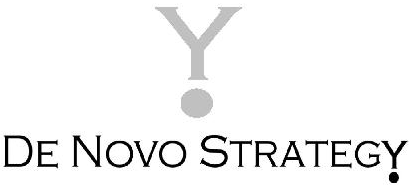By Wendell Brock, MBA, ChFC
Today the FDIC issued the Fourth Quarter 2007 banking profile, which contained very mixed results on a slippery slope. The industry as a whole is struggling through the latest national economic tidal wave of debt problems from the sub-prime termoil to an over leveraged derivative market. So the banks are squeezed between tougher regulation enforcement, higher deposit rates, lower net interest margins, larger loan loss reserves, higher charge off and noncurrent accounts, growth in deposits, etc. The following are some key highlights.
Widespread earnings weakness occurred in more than half the institutions - "51.2% reported lower net income than in the 4th quarter of 2006. One out of four institutions with assets greater than $10 billion reported a net loss for the fourth quarter." During the 4th quarter interest rates fell, which increased downward pressure on Net Interest Margins (NIM), making it the lowest quarterly NIM since 1989.
Total earnings for banks were off by 27.4% for all of 2007, which was a decline of $39.8 billion to $105.5 billion. This is the first time since 1999-2000 that annual net income declined. Only 49.2% of insured institutions reported improved earnings in 2007 - the lowest level in 23 years. Unprofitable institutions reached a 26 year high of 11.6% at the same time the ROA was the lowest in 26 years at 0.86%. This is the first time since the mid 1970's that noninterest income has declined - it fell by 2.9% to $233.4 billion.
2007 fourth quarter net charge offs spiked nearly 100% to $16.2 billion over the same quarter in 2006 which had $8.5 billion. This increase has regulators very worried. In mid 2006 the amount of noncurrent loans (loans which are 90 days past due) began an upward movement, this loan pool continued to swell by $26.9 billion, a increase of 32.5% during the 4th quarter of 2007. "The percentage of loans that were noncurrent at year-end was 1.39%, the highest level since the third quarter of 2002." This has prompted banks to put more away in their Allowance for Loan and Lease Losses (ALLL). The ALLL reserve ratio rose from 1.13% to 1.29% during the quarter; however it was not enough to cover the increase in noncurrent loans. "At year end, one in three institutions had noncurrent loans that exceeded reserves, compared to fewer than one in four institutions a year earlier."
Equity capital increased by $25.1 billion or 1.9%; at the same time the leverage ratio fell to 7.98% down from 8.14%. "In contrast, the industry's total risk-based capital ratio, which includes loss reserves, increased from 12.74% to 12.79%." In the end 99% of all insured institutions, which represents more than 99% of industry assets, met or exceeded the highest regulatory capital requirements. During this same time, banks were lending money - asset growth continued strong - assets increased by $331.8 billion or 2.6% during the quarter. Because of the high increase in noncurrent loans, examiners have been watching closely the concentrations of bank portfolios in commercial real estate. In spite of the construction slow down, the number of banks that have a high concentration of construction lending increased from 2,348 to 2,368. A high concentration of commercial real estate loans in a bank's loan portfolio is defined when that part of the loan portfolio exceeds the bank's total capital.
Deposits grew to record levels during the 4th quarter. Institutions saw an increase of $170.6 billion or 2.5%, the largest quarterly increase ever reported. "The industry's ratio of deposits to total assets, which hit an all time low of 64.4% at the end of the 3rd quarter, rose slightly to 64.5% at year end."
For the year, Trust Assets increased an amazing $2.6 trillion or 13.4% for managed accounts and $68.6 billion or 1.6% for non-managed accounts. "Five institutions accounted for 53% of the industry's net trust income in 2007."
In 2007, there were only three bank failures, this is the most since 2004 - this ended the unprecedented run of no bank failures (there was only one failure in the 4th quarter). The two-year term was the longest in the FDIC's history. During the quarter, there were 50 de novo banks, which brought the total for the year up to 181 new institutions. Mergers in the 4th quarter slowed down to 74 for an annual total of 321 banks merged out of existence. The regulator's problem bank list grew to 76 banks, up from 65 at the close of the 3rd quarter. The total assets of these problem banks are $22.3 billion, up from $18.5 billion at the end of the 3rd quarter. The total FDIC insured institutions ended the year at 8,533 down, slightly from 8,559. For a complete copy of the report see request for a white paper.
By:
Wendell Brock, MBA, ChFC
Principal
De Novo Strategy
www.denovostrategy.com


